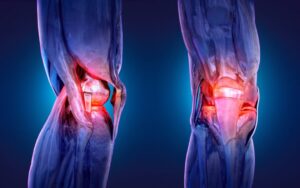Understanding how animals move and behave near roads is essential for developing effective safety strategies that protect both humans and wildlife. While the question of How Fast Can a Domestic Chicken Cross the Road? might seem simple, it opens the door to a complex analysis of animal crossing behaviors, which vary significantly across species and environmental contexts. This article explores how these behaviors influence safety measures and how leveraging this knowledge can reduce accidents and promote ecological harmony.
1. Understanding Animal Movement Patterns and Their Influence on Road Safety
a. How do different species’ crossing behaviors vary in natural settings?
Animals exhibit diverse crossing behaviors based on their evolutionary adaptations, habitat, and activity patterns. For example, herbivores like deer tend to migrate during dawn and dusk, often in herds, which increases the likelihood of multiple crossings within a short timeframe. Conversely, smaller animals such as rabbits or rodents may cross unpredictably, often in response to immediate threats or food sources. Understanding these species-specific behaviors allows safety planners to anticipate crossing hotspots and times, effectively reducing collision risks.
b. What role does animal cognition and decision-making play during crossings?
Animal decision-making during crossings involves sensory cues, prior experiences, and environmental awareness. For instance, studies show that some species, such as deer, develop learned behaviors to avoid roads after negative encounters, while others may follow instinctual migration routes regardless of human presence. Cognitive factors influence how animals assess risks and choose crossing points, informing the design of safer wildlife corridors and barriers.
c. How do environmental factors (e.g., terrain, weather) affect animal crossing speed and behavior?
Environmental conditions significantly impact crossing behavior. Wet or icy weather can slow animals due to reduced traction and increased caution, while rugged terrain may cause animals to take longer routes or cross less frequently. Seasonal changes, such as migration periods, also influence crossing density and timing. Recognizing these factors enables authorities to implement dynamic safety measures, like seasonal signage or temporary fencing, tailored to environmental conditions.
2. The Biological and Behavioral Factors Affecting Crossing Speed and Safety
a. How does age, health, and species size influence crossing behavior?
Younger or healthier animals tend to cross more swiftly and confidently, whereas older or injured animals may hesitate or move slowly, increasing their vulnerability. Larger species, like elk or cattle, often require more space and time to cross safely, and their size can make collisions more severe. Conversely, smaller animals may attempt quick crossings, but their speed can be compromised by environmental factors or stress.
b. What are the typical alertness and stress responses in animals when approaching roads?
Animals approaching roads often exhibit heightened alertness, including scanning movements, ear orientation, or sudden stops—responses driven by their innate survival instincts. Stress responses, such as increased heart rate or fleeing behavior, can either lead to rapid crossings or panic-driven miscalculations, elevating collision risks. Monitoring these cues can help in designing warning systems that align with natural animal reactions.
c. How do domesticated versus wild animals differ in crossing strategies and risks?
Domesticated animals, like chickens or cattle, often have learned behaviors influenced by human activity, which can lead to predictable crossing patterns. Wild animals, on the other hand, rely more on instinct and environmental cues, leading to less predictable crossings. For example, studies have shown that domesticated chickens cross roads at relatively consistent speeds, facilitating safety planning, whereas wild animals’ crossing behaviors are more variable and influenced by factors such as predator presence and habitat fragmentation.
3. The Role of Animal Behavior in Predicting Crossing Events for Road Safety
a. How can behavioral cues be used to anticipate animal crossings?
By observing specific cues—such as increased alertness, directional head movements, or herd movement patterns—traffic management systems can predict imminent crossings. For example, in areas with high wildlife activity, motion sensors can detect herd movements or individual animals approaching roads, triggering warning signals for drivers. Incorporating behavioral analytics into monitoring systems enhances predictive accuracy, reducing collisions.
b. What technologies assist in detecting and interpreting animal movement near roads?
Advanced technologies include thermal imaging cameras, motion sensors, and AI-powered video analysis. For instance, thermal cameras detect heat signatures of animals even in low visibility conditions, while AI algorithms interpret movement patterns to identify species and crossing intent. GPS collars and wildlife tracking collars also provide data on migration routes and crossing hotspots, enabling proactive safety measures.
c. How can understanding animal vigilance improve traffic management and warning systems?
Recognizing when animals are most alert or stressed allows for the development of timed warning systems that coincide with peak crossing periods. For example, adaptive signage that activates during migration seasons or at certain times of day can alert drivers to potential crossings. This targeted approach minimizes unnecessary warnings, reducing driver fatigue and increasing safety effectiveness.
4. Designing Road Safety Strategies Informed by Animal Behavior
a. How can infrastructure modifications (e.g., wildlife corridors, fencing) mitigate crossing risks?
Creating dedicated wildlife crossings—overpasses, underpasses, and fenced corridors—provides safe passage routes that align with natural movement patterns. These structures reduce road mortality and maintain habitat connectivity. For example, the Banff Wildlife Crossings in Canada have successfully decreased animal-vehicle collisions by over 80%, demonstrating the effectiveness of infrastructure tailored to animal behavior.
b. What are effective signage and warning systems tailored to specific animal behaviors?
Dynamic signage that activates during migration seasons or peak activity times, combined with flashing lights or reflective markers, can alert drivers to slow down and watch for crossing animals. Signage designed with animal silhouettes or reflectors that mimic natural cues can enhance driver awareness. Tailoring warnings to species-specific behaviors improves compliance and safety outcomes.
c. How can traffic regulation be adapted during peak crossing times or seasons?
Implementing seasonal speed limits or temporary road closures during migration or breeding seasons helps prevent accidents. In some regions, law enforcement employs temporary barriers or patrols during high-risk periods. Incorporating real-time animal movement data into traffic control systems ensures that regulations are responsive to current crossing activity, optimizing safety without disrupting traffic flow unnecessarily.
5. Non-Obvious Ethical and Ecological Considerations in Road Safety Measures
a. How do safety strategies impact animal habitats and migration patterns?
While infrastructure like fencing and crossings improves safety, it can also fragment habitats if not implemented thoughtfully. Proper planning ensures that wildlife corridors connect habitats without restricting natural migration routes. For example, the Yellowstone to Yukon Conservation Initiative emphasizes ecological connectivity while enhancing road safety, balancing human and animal needs.
b. What are the ethical implications of using deterrents or barriers to control animal movement?
Deterrents such as flashing lights or sonic devices may cause stress or disorientation in animals if misused. Ethical considerations demand that safety measures minimize harm and disturbance, emphasizing humane, non-invasive solutions. For instance, research suggests that visual barriers like reflective fencing can guide animals safely without causing undue stress.
c. How can road safety strategies balance human safety with animal conservation efforts?
Integrating ecological data into safety planning ensures that measures protect wildlife while safeguarding drivers. Policies promoting habitat preservation, combined with infrastructure that encourages safe crossings, exemplify this balance. Collaborative efforts among conservationists, engineers, and policymakers are key to sustainable solutions that respect both human and animal interests.
6. Case Studies: Successful Integration of Animal Behavior Insights into Road Safety Plans
a. Examples of wildlife crossings and their impact on local animal populations and traffic safety
The Banff Wildlife Crossings exemplify how understanding animal movement and crossing speeds can lead to effective infrastructure. Post-construction data indicates an 80% reduction in animal-vehicle collisions, with positive effects on local populations, including elk, bears, and deer. These crossings also facilitate seasonal migrations, demonstrating the importance of species-specific behavioral insights.
b. Lessons learned from incidents involving domestic animals and road accidents
In rural communities, domestic animals like chickens and cattle often cross roads unexpectedly, leading to accidents and injuries. Lessons learned include the necessity of fencing, community awareness campaigns, and timed warning signs during known crossing periods. These measures, rooted in understanding domestic animal behavior, have significantly improved safety outcomes.
c. Innovations in monitoring animal behavior to enhance safety measures
Emerging technologies, such as AI-driven video surveillance and GPS tracking, enable real-time monitoring of animal movement. Projects like the Wildlife Alert System in Scandinavia use these tools to alert drivers proactively. Such innovations exemplify how integrating behavioral data with technology can create adaptive, effective safety solutions.
7. Returning to the Parent Theme: How Animal Crossing Speeds Inform Broader Safety Strategies
a. How does understanding the crossing speed of domestic chickens help in designing safer rural roads?
Knowing that a domestic chicken typically crosses the road in approximately 10-15 seconds, and at speeds around 1-2 meters per second, allows engineers to set appropriate warning times and design crossings that accommodate these speeds. This understanding ensures that signage and barriers are timed to provide sufficient reaction time for drivers, reducing the likelihood of collisions with domestic animals.
b. What parallels can be drawn between simple crossing speeds and complex animal movement patterns?
While crossing speeds of domestic chickens are relatively predictable, they serve as a model for understanding more complex behaviors in larger or wild animals. For example, herd dynamics, migratory routes, and decision-making processes can be informed by simple data points like crossing speed, facilitating the development of predictive models for diverse species.
c. How can insights from the chicken crossing question contribute to comprehensive road safety planning for species?
By establishing baseline crossing speeds and behaviors, planners can create adaptable safety systems that account for various species’ movement patterns. This foundational knowledge supports the design of universal warning systems, flexible infrastructure, and dynamic regulation policies that collectively enhance safety for both humans and wildlife across different environments.


